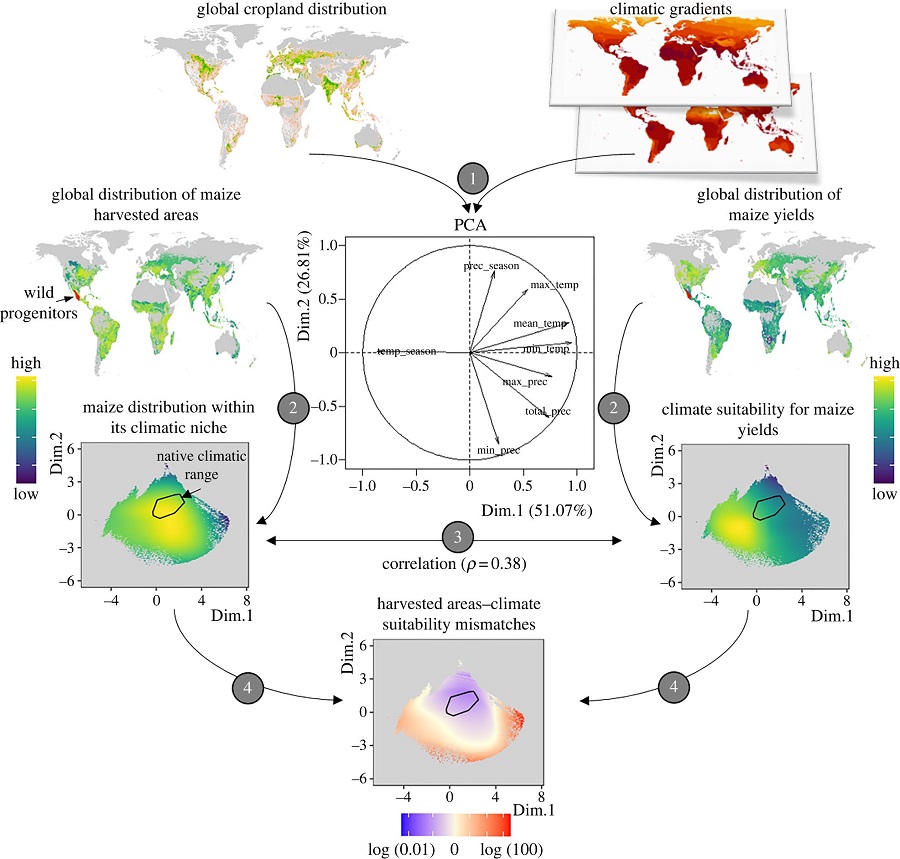Irene Vega
Agricultural activity is distributed throughout most of the temperate, tropical and subtropical regions of the globe, but it is unknown to what extent the global agricultural system is designed to optimize production in each place or, on the contrary, if crops are cultivated. the species in one place or another due to historical contingencies, without planning how the distribution of these crops could be optimized to increase harvests.
For example, rice (Oryza sativa L.) is the most important crop globally after corn and, therefore, one of the most relevant agricultural species to guarantee food security globally. Despite its importance, the areas where rice is cultivated with greater intensity - warm areas and frequently with certain seasonality in rainfall - are not the ones with the greatest harvest potential for the species, according to the results of this international study in the which the URJC has participated. This research has found that if rice cultivation were intensified in areas with more temperate climates, the global harvest of this species would increase.
To carry out this work, published in the scientific journal Proceedings of the Royal Society B, the scientific team has compared the degree of coincidence between the global geographic distribution of twelve relevant agricultural species (corn, rice, barley, cassava, peanut, wheat, sunflower, beet, soybean, sorghum, potato and rapeseed) with the climatic suitability of these places to optimize harvests. As a main result, it has been observed that the relationship between the places where each of these species are cultivated and the suitability of these places to maximize their production is quite variable. Compared to rice cultivation, “species such as barley (Hordeum vulgare L.) or peanut (Arachis hypogaea L.), also very relevant to the food system, have a better match between the productive potential of the areas where we grow them and the number of hectares we plant in each place”, highlights Rubén Milla, researcher in the Biodiversity and Conservation area of the URJC and co-author of the study.
global data collection
During the study, data has been collected from around the planet on the number of cultivated hectares and the amount of harvest obtained for each of the twelve agricultural species, from 1997 to 2003. At similar spatial scales, climatic, edaphic, topographical, agronomic and socioeconomic data of all the geographical places where agricultural cultivation areas were identified. "With these data, spatial distribution models of the species were built both for the intensity with which they are cultivated in each place, that is, the cultivated hectares, and for the climatic potential of these sites to maximize the harvest," explains the researcher. of the URJC.
Once all the data was obtained, the scientific team compared both models and developed, for each place and species, an index of discrepancy between the number of cultivated hectares and their climatic suitability. The positive values of this index conclude that there are situations in which the climatic suitability is high, but little is cultivated, while the negative values indicate situations in which the number of hectares harvested is disproportionately large with respect to the climatic suitability of the place. for that crop.
"The results obtained in this work allow us to identify climatic regions of the planet where the expansion of certain crops could result in increased harvests globally and, therefore, contribute to food security," says Rubén Milla. In addition, as a result of this study, it will be possible to locate regions in which the suitability of some agricultural species is low and make changes in agricultural planning to increase crop production.




